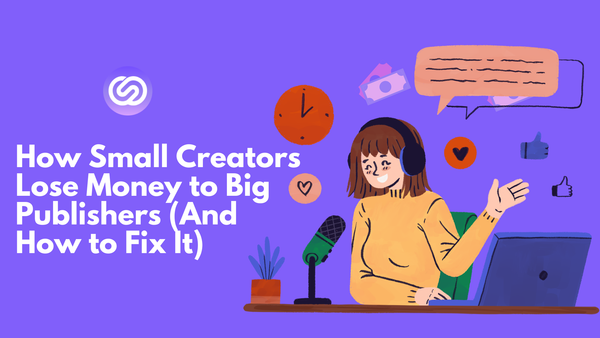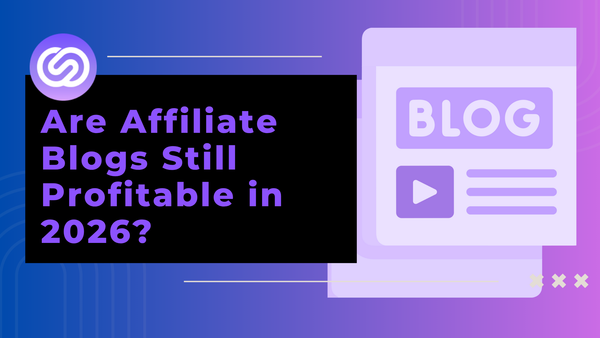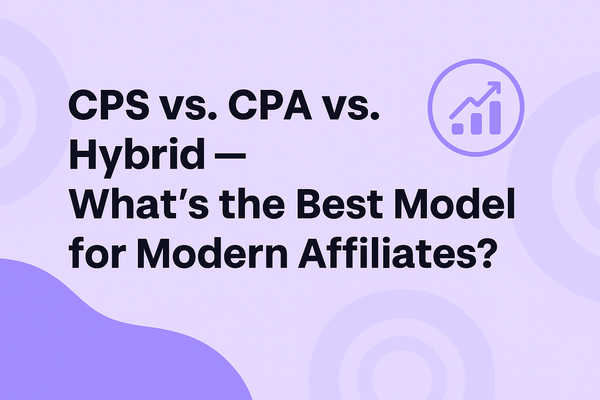Why New Creators Should Monetise Before They Go Viral
Everyone wants to be a content creator today.

Everyone wants to be a content creator today.
The internet is flooded with tips, trends, and transition effects — but beneath the surface, a different truth plays out. While 25% of us already identify as creators, less than 1% actually make a consistent income from it.
Why?
Because most creators are great at content, but not at monetising it.
They optimize for engagement, views, and reach. But not for conversions. Not for product placements. Not for revenue.
Most creators operate with a hopeful mindset — “First, I’ll grow an audience. Then brands will reach out.”
But that approach is slow, uncertain, and riddled with practical roadblocks.
Let’s break it down.
PROBLEMS WITH CREATORS WAITING FOR BRAND DEALS
1. Most content is built for views, not value
A trending sound, a viral challenge, a relatable skit. It gets views — but that doesn’t always build a path to monetisation.
There’s no product, no CTA, no buyer journey. Just attention.
And attention without direction is just noise.
2. Audience-first strategies dilute your niche
When you’re chasing engagement, you say yes to every trend. But doing so waters down your identity.
You become broad. Generic. Forgettable.
Instead of building a niche community, you build a scattered audience that may like your content — but won’t buy from you.
3. Zero practice in product placement
Brand deals require you to blend a product into your content seamlessly. But creators who wait for those deals never get to practice this skill.
So even when the deal does come, they’re unsure how to present the product naturally.
4. Overestimating brand deal timelines
Creators often overestimate how fast they’ll land sponsorships. In reality, brands move slowly.
They need data, proof of performance, sometimes agency involvement, and often months of back-and-forth.
Many creators can’t afford to wait that long.
5. Part-time creators drop out
Here’s the biggest problem: most creators aren’t full-time. They have jobs, responsibilities, bills.
If their content doesn’t start earning fast, the dream dies fast.
A monetisation delay isn’t just inconvenient — it’s unsustainable.
EARLY-STAGE CREATORS CAN (AND MUST) MONETISE FROM DAY 1
Let’s flip the script.
Instead of waiting to become a successful creator before earning…
Start thinking: “I’m successful the moment I learn how to earn.”
Even with a small audience. Even before the brand deals. Even before you feel “ready.”
Here’s how to build your monetisation model from the very beginning:
1. Reframe your content: Solve a real problem
Don’t just entertain — solve.
That problem can be anything — muscle gain, skincare, packing hacks, relationships, kitchen storage. Doesn’t matter.
As long as it’s specific and searchable, you’re building a niche.
Think:
- “What should I wear to an office party?”
- “How to eat clean with a full-time job?”
- “Which utensils save time in the kitchen?”
- “How to sleep better with sinusitis?”
These aren’t content ideas — they’re community cues.
Your audience isn’t just watching; they’re following you for answers. That’s where loyalty — and eventually purchases — begin.
2. Find Amazon products in your niche
Start matching your content topics to real products people can buy.
Gym fits, home gadgets, travel pillows, budget planners, skin patches — Amazon has everything.
You don’t need a massive haul video. Even a subtle placement in your story, a caption, a “check my link” plug works.
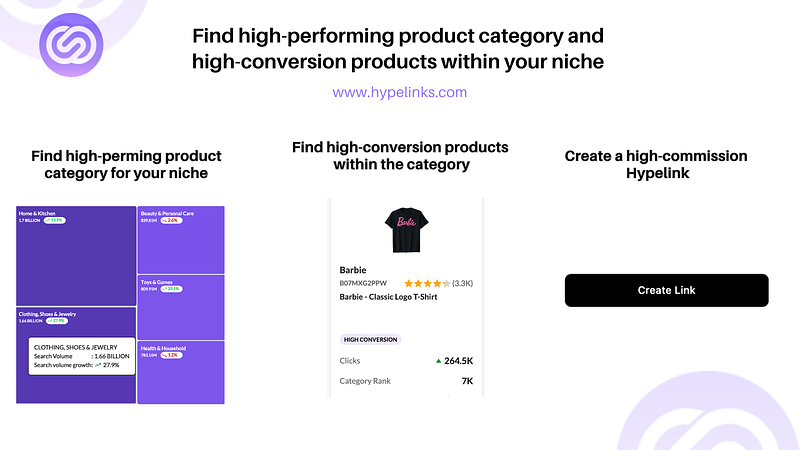
3. Sign up for affiliate platforms like Amazon Associates
This is the simplest way to start monetising.
With Amazon Associates, you can create trackable links for each product. Every time someone buys from your link, you earn a commission.
No need for a brand deal. No approval wait. Just share products you already use or believe in.
4. Use alternate platforms for higher commissions
Now here’s where early creators go from average to advanced.
Amazon’s default commission is often low. But third-party platforms can help you earn higher commissions on the same products.
Here are 5 platforms to check out:
- Hypelinks.com — lets creators earn higher commissions on Amazon products, with built-in data reports.
- ShareASale — great for niche physical products.
- Impact.com — wide brand network and useful analytics.
- LTK (LikeToKnowIt) — popular among fashion and lifestyle creators.
- CJ Affiliate — ideal for tech and software categories.
You don’t have to choose one — combine where it makes sense.
5. Build your creator storefront
A major mistake creators make, especially in their early days, is relying
only on Instagram, TikTok, or YouTube to monetise.
But these platforms aren’t shopping-first.
They won’t show your affiliate links in obvious ways. You need a space where followers can shop you.
That’s your creator storefront.
A single link that curates all the products you recommend — by category, use-case, or even content series.
Here are 10 storefront platforms to explore:
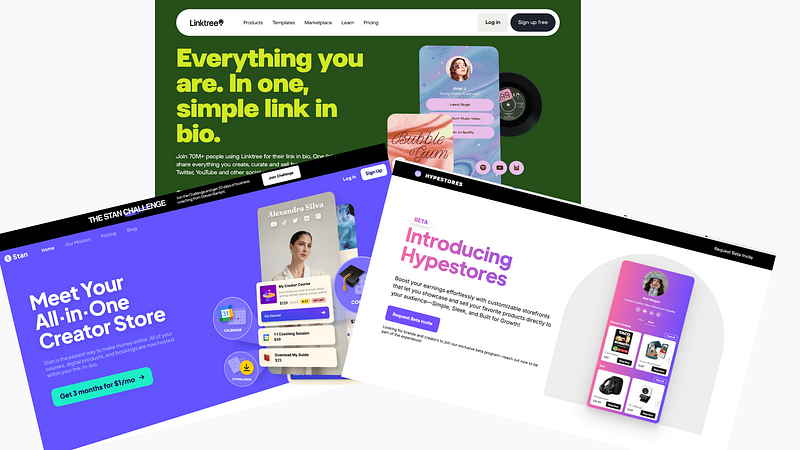
Create once, share everywhere. Make it easy for your viewers to buy.
THE PRINCIPLES OF HIGH-EARNING CREATORS
Once you’ve set up your monetisation foundation, here’s how to level up:
1. Demonstrate you can convert
Brands no longer want creators with just reach. They want creators who can drive purchases.
By using affiliate products early, you prove your ability to place, promote, and sell.
That’s gold when you’re pitching for paid partnerships.
2. Own your data, own your leverage
Soon, likes and comments won’t be enough.
Conversion data will decide deals.
Start tracking:
- Clicks
- Link-to-purchase time
- Conversion rate
- Product type performance
Tools like Hypelinks.com help you automate this. You’ll get real reports to attach in brand pitches.
3. Build micro-communities, not mass appeal
It’s better to have 1,000 people who trust your skincare reviews than 100,000 who just like your dance reels.
Micro-communities convert.
Because they don’t just watch — they act.
4. Focus on what compounds
Every link, every product placement, every piece of content you publish is a compounding asset.
Affiliate links can keep earning long after you post.
Storefronts can grow in SEO.
Reports can win future deals.
Don’t chase viral. Chase what builds.
Final Word
There are many kinds of content creators.
Some create purely for the joy of it. Some create to build an audience. Some want to go full-time and build an income.
But too many creators give up — not because they lacked talent, but because they didn’t find the right platforms, the right tools, or the right mindset in time.
If you’re starting now, know this:
You don’t have to wait for success.
You can earn as you grow.
And day one can be your first step toward full-time, funded, freedom-driven creation.
